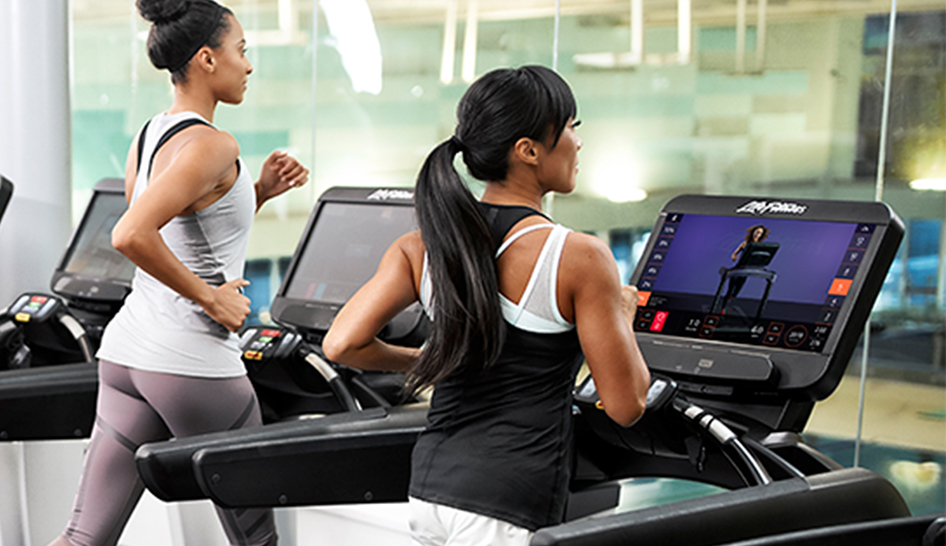Music has always been an important part of the fitness industry. It can help to motivate people to work out harder, improve their mood, and distract them from the pain of exercise. However, the way that music is used in the fitness industry is changing.
One of the biggest changes is the rise of streaming music services. In the past, fitness facilities had to purchase and license their own music playlists. This was expensive and time-consuming. However, streaming music services make it easy for fitness facilities to access a vast library of music without having to worry about licensing fees.
Another change is the increasing use of personalized music playlists. Fitness apps and streaming music services allow users to create playlists that are tailored to their individual preferences. This means that people can listen to music that they enjoy and that motivates them, which can lead to better workouts.
Furthermore, the fitness industry is becoming more diverse, and this is reflected in the music that is used in fitness classes. Fitness instructors are now incorporating a wider range of music genres into their classes, including hip hop, electronic dance music, and Latin music. This helps to make fitness classes more enjoyable and accessible to a wider range of people.
Here are some specific examples of how music is changing in the fitness industry:
-
Fitness apps are using music to create more immersive and engaging workout experiences. For example, some apps use music to synchronize with the user’s heart rate, creating a personalized workout experience. Other apps use music to create virtual workouts that allow users to feel like they are working out in a real-world setting.
-
Fitness studios are using music to create more unique and memorable experiences. For example, some studios use live DJs to play music during their classes. Other studios use music to create themed workouts, such as a “disco dance party” or a “Latin fiesta.”
-
Fitness brands are partnering with musicians to create exclusive workout playlists. This is a way for fitness brands to connect with their target audience and promote their products. For example, Nike has partnered with artists such as Drake and Beyoncé to create exclusive workout playlists.
These are just a few examples of how music is changing in the fitness industry. As the fitness industry continues to evolve, we can expect to see even more innovative ways to use music to improve the fitness experience.
Here are some of the benefits of using music in fitness:
-
Music can motivate people to work out harder. Studies have shown that people who listen to music while they work out tend to work out for longer and harder than those who don’t listen to music.
-
Music can improve mood. Music can help to reduce stress and anxiety, and it can make people feel more positive and motivated.
-
Music can distract from the pain of exercise. When people are listening to music, they are less likely to focus on the pain of exercise. This can help them to push themselves harder and achieve better results.
-
Music can create a sense of community. When people are working out together and listening to the same music, it can create a sense of camaraderie and motivation.
Overall, music is a powerful tool that can be used to improve the fitness experience. By using music in innovative and creative ways, fitness facilities and instructors can help their clients to achieve their fitness goals and have more enjoyable workouts.
In addition to the trends mentioned above, here are some other ways that music is changing in the fitness industry:
-
Music is becoming more personalized. Fitness apps and streaming music services are making it easier for people to create personalized music playlists that are tailored to their individual preferences. This means that people can listen to music that they enjoy and that motivates them, which can lead to better workouts.
-
Music is becoming more immersive. Fitness apps are using music to create more immersive and engaging workout experiences. For example, some apps use music to synchronize with the user’s heart rate, creating a personalized workout experience. Other apps use music to create virtual workouts that allow users to feel like they are working out in a real-world setting.
-
Music is becoming more diverse. The fitness industry is becoming more diverse, and this is reflected in the music that is used in fitness classes. Fitness instructors are now incorporating a wider range of music genres into their classes, including hip hop, electronic dance music, and Latin music. This helps to make fitness classes more enjoyable and accessible to a wider range of people.
These trends are likely to continue to evolve in the future. As technology advances, we can expect to see even more innovative ways to use music to improve the fitness experience.

